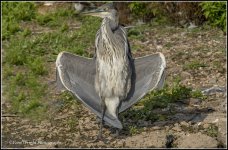Started at the Flashes 6am till 10am ( and revisited 3pm till 4.50pm). A cool start with a westerly breeze, but things warmed up rapidly, at which point I turned to 'hedge watch'. This is the hedge that runs along the back of the hide to the public footpath - the 'west hedge'. Along here today I saw, -
lesser whitethroats, whitethroats, a reed warbler, chiffchaffs and regular garden birds as well as linnets and many goldfinches. On the Lagoons there was a small influx of waders, but no new species. The whole family of
shoveler including the female were on the 3rd Flash, but later some had returned to the Moors. One of the juveniles from the last brood of avocets to fledge was missing its two siblings and mother were still together.
Early on this morning I heard a brief snatch of what I am sure was a
begging cuckoo and accompanying reed warbler 'chacking', ironically close to the 'cuckoo ' hide. I heard it calling from the pool side of the hedge just past the cuckoo hide. Its call intensified (presumably just as it was about to be fed), as I approached the it, a cuckoo sized bird crashed through the branches. The begging call then resumed, from the blackthorn next to the feeding station. link to cuckoo begging call
http://www.xeno-canto.org/explore?query=common+cuckoo
Species count FLASHES
Little grebe, teal 17, shelduck 7 (6 juvs), shoveler 11, mallard 100 +, tufted fem + 4 chicks c10 days old on 3rd Flash.
Avocet 9 ads + 2 juvs + 9 chicks, dunlin 2, LRP 3 (ad + 2 juvs), snipe 4, green sand 14, common sand 3, lapwing 170+ , curlew 5, Oystercatcher pr + chick,
Med Gull (juv - same as Sunday), common gull 2nd summer, BHG 220, green woodp 2, raven 3, rook 30+, jay, stock dove 40+, swallow 2, sand martin 2, reed warbler 10, sedge warbler, lesser whitethroat 3, whitethroat 2, blackcap, chiffchaff 6, linnet 6, goldfinch 45,
Sailing Pool . GCG ad + 2 juvs





